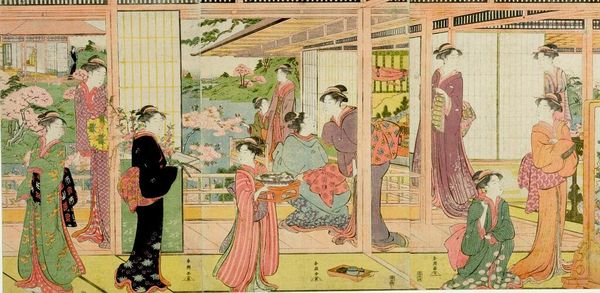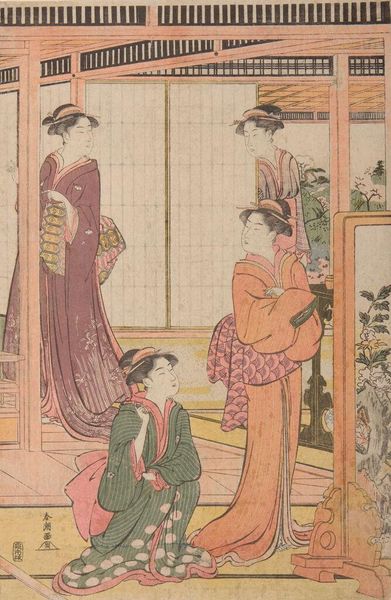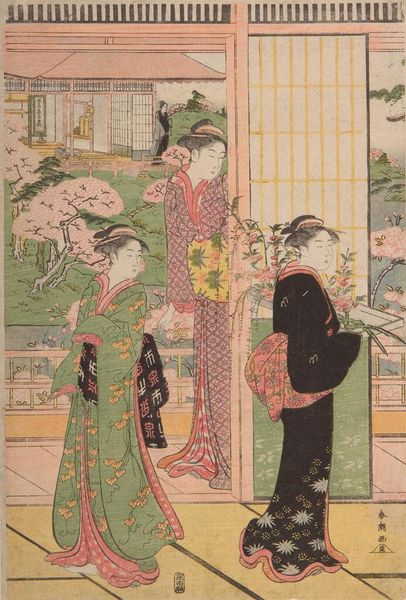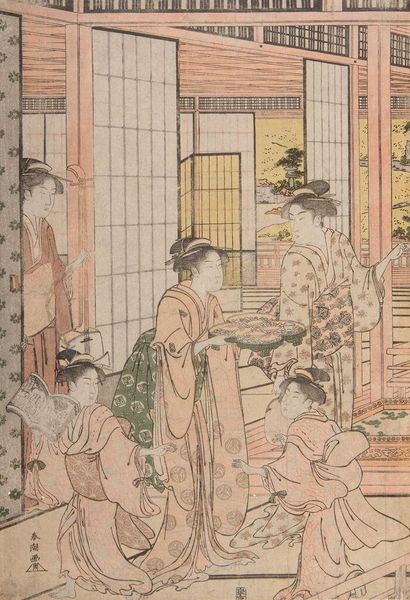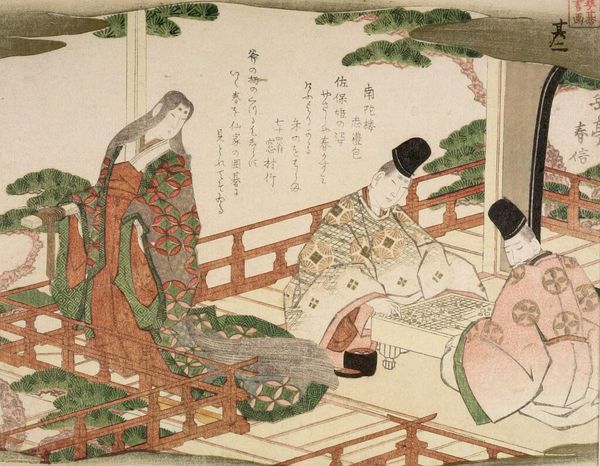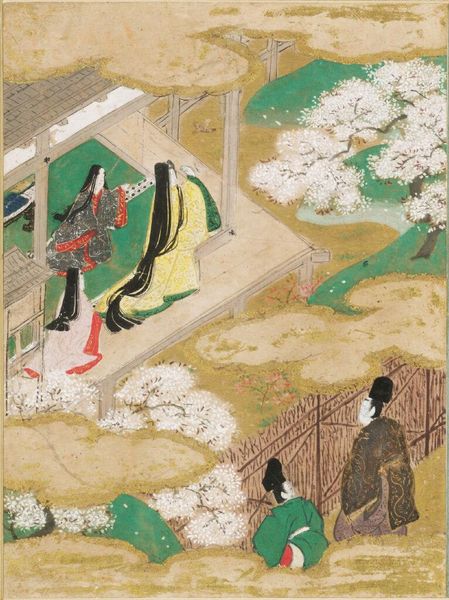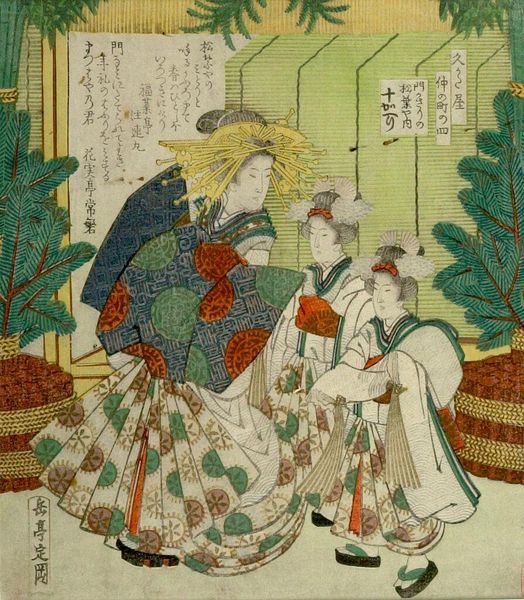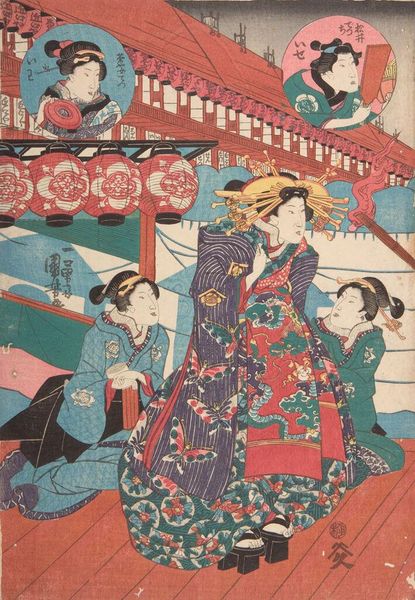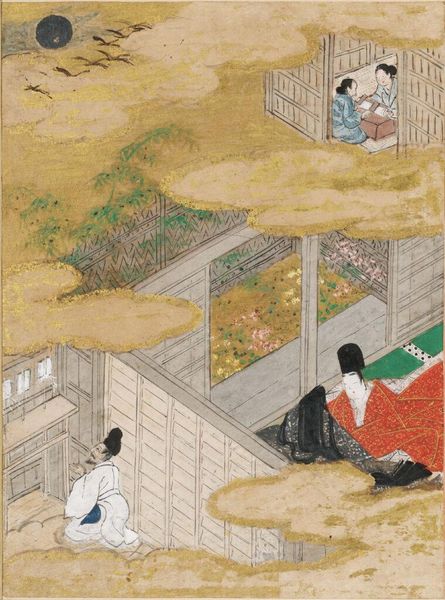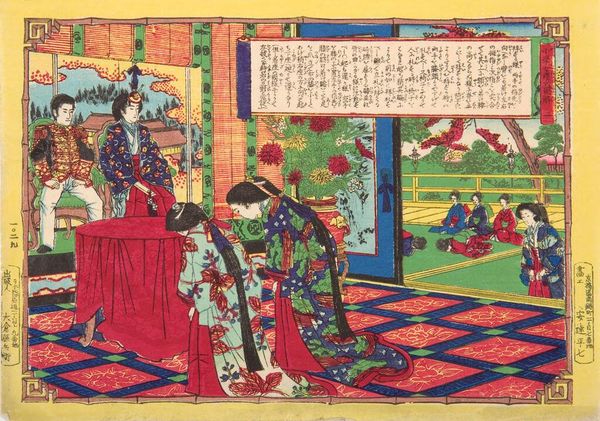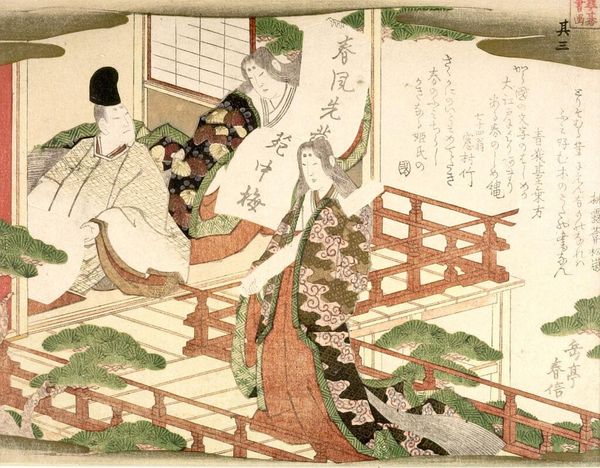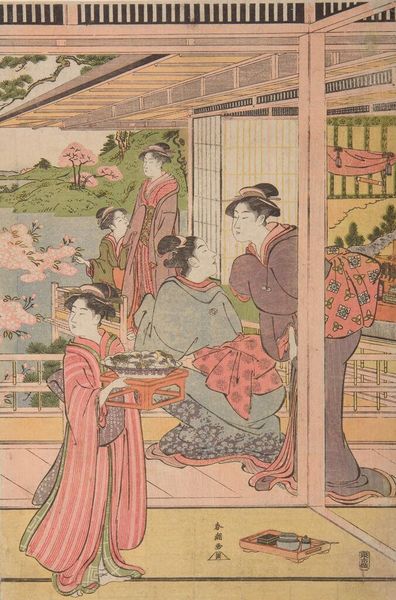
Copyright: Public Domain: Artvee
Editor: So, this is Tsukioka Yoshitoshi's "Izumibun Restaurant at Minami Nabechō," made in 1871 using woodblock prints. I am drawn to the figures here, as they seem poised between public performance and private lives. What's your read on this, given its cultural context? Curator: Well, looking at this from a historical perspective, we see more than just a snapshot of daily life. Ukiyo-e prints, like this one, served as a powerful medium to reflect and shape public opinion. Genre paintings like these moved away from traditional historical subjects towards those focusing on scenes of everyday life. It prompts the question, whose daily life are we really seeing here? Editor: That's a good point. Is the scene of the figures out in front staged or is the daily life focusing more on the figure in the background? Curator: Exactly! Notice the strategic placement of the red banners with vertical writing in this composition, almost like advertisements. Who is this art truly meant for, what's the artist trying to portray, and more importantly, who's being excluded from this picture? Editor: That's insightful, framing it within the socio-economic forces at play. It makes me consider how even seemingly neutral depictions can reinforce certain social hierarchies and appeal to a select clientele. Curator: Indeed. The Ukiyo-e tradition wasn’t simply documenting life; it was actively constructing and promoting certain views of urban life, commerce, and even beauty. Are they promoting cultural change? Editor: I now appreciate the way the composition subtly guides our understanding of 19th-century urban society, with its mix of commerce and entertainment. Thank you for the added layer of understanding, beyond just the pure aesthetics. Curator: My pleasure! Hopefully you now view these pieces, in museums like this, through a refreshed historical lens.
Comments
No comments
Be the first to comment and join the conversation on the ultimate creative platform.
